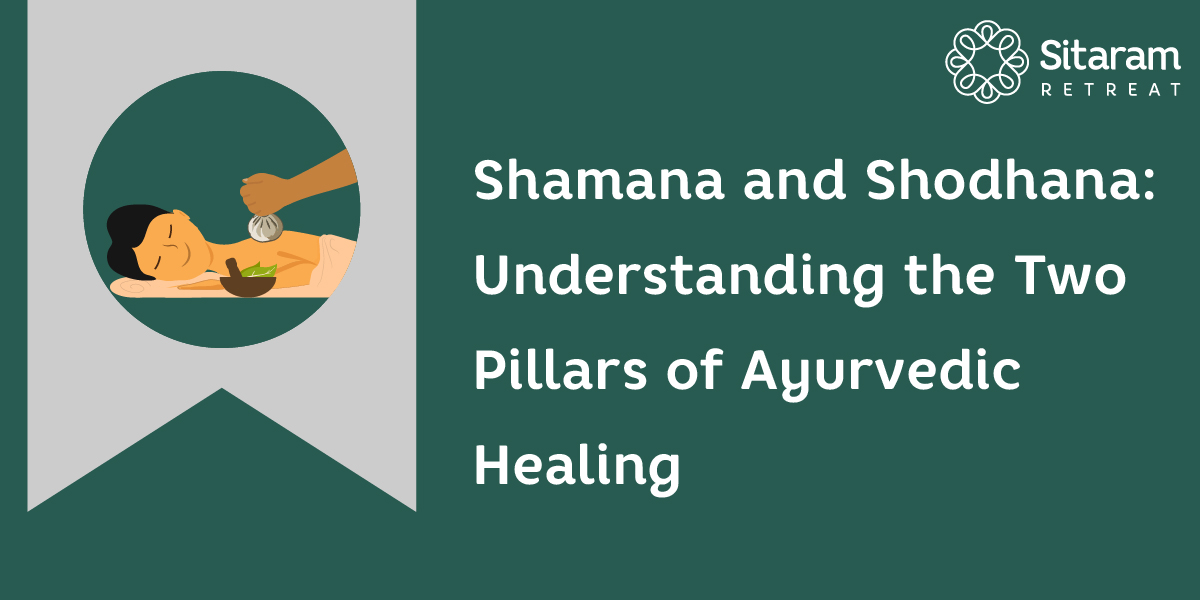ALLERGY- The Ayurvedic Perspective
By Vignesh Devraj

Allergy is like a customized nuisance. No matter what the allergen is, it is your body that decides whether it should invoke an immunological reaction or not.
It might be a very small factor that triggers the immune response, but the way your body reacts to it can become your worst nightmare. These responses can manifest in different ways as your system makes use of all means to get rid of the allergen. While respiratory tract allergies produce symptoms like headaches, sneezing, wheezing, coughing and reddish runny nose, skin allergies appear as itching, redness or oedema. Food allergy can bring about vomiting, stomach ache or diarrhea. Usually harmless and mild, allergic reactions can get severe sometimes and can lead to conditions like anaphylactic shock. Therefore, knowing the pattern and depth of your allergy is important.
Allergy and Ayurveda
Before examining the Ayurvedic aspect of allergy, we need to get familiar with TriDoshas. TriDoshas are the three bio-energies in the human body namely Vata, Pitta and Kapha as postulated by Ayurveda. Each of these is characterized by different qualities and functions. Vata is dry, light, cold and moving whereas Kapha is heavy, sticky, cold, oily, dense and sedentary. Pitta is referred to as the fiery one among the three- hot, burning, sharp, smelly and unctuous. The harmony between these three Doshas leads to health while their imbalance creates diseases. Allergy is one of the conditions that arise out of this disproportion, and that means allergy can occur due to any of these Doshas.
- Allergy due to Vata– likely to occur in the presence of cold and dry substances. It exhibits symptoms like: –
- Headache, body ache and muscle cramps
- Wheezing
- Respiratory troubles
- Dry cough
- Blackish discoloration of the skin
- Bloating
- Colic
- Dryness of mouth and eyes
- Allergy due to pitta– happens with hot, humid factors. Probable symptoms: –
- Reddish discoloration
- Burning sensation
- Inflammatory changes
- Headaches
- Heartburn
- Skin rashes
- Hives
- Red-eye
- Allergy due to Kapha- cold and humid factors could evoke these symptoms: –
- Running nose and nasal congestion
- Water retention
- Sneezing
- Cough and expectoration
- Heaviness of head
- Nausea and vomiting
- Idleness
The Ayurvedic Shield
Now that we know about the Doshas, let us learn how to manage them. Ayurveda proposes treatment through the theory of similarities and differences, which states that the food/ medicines that possess the similar qualities of one Dosha increase the respective Dosha, and vice versa. Hence, to pacify a particular Dosha aggravation, we need to focus on using the food/ medicines having the opposite properties.
- For vatik allergies
To relive these, we need to stick to warm and unctuous things, especially liquids like soups. Avoid cold water, dry and fried food, though oily foods prepared with organic oils can be used. Stay away from raw veggies, pulses and nuts as they may increase the Vata Dosha. Ashwagandha (Withania somnifera), which is also an immunomodulator, garlic (Allium sativum) is highly beneficial in curing Vatik diseases. Oil massage is found to be useful to reduce aches and cramps.
- For paittik allergies
Cool, dry things are to be used to pacify pitta Dosha. Guduchi (Tinospora cordifolia), gooseberry (Emblica officinalis), neem (Azadirachta indica) is some of the herbs that can be employed. Drink plenty of cool fruit juices and water. Say no to caffeine as well as alcohol. Ghee is preferred over oil to cook food. Aloe vera gel can be applied to the body and hair.
- For kaphaja allergies
Consume light but spicy food. Using spices like ginger, cardamom, basil, pepper, cumin etc. would be highly appreciated. Drink hot water as it will help with digestion and clear the channels. Decoctions of Kapha reducing drugs like Punarnava (Boerhavia diffusa) could be used. Milk and dairy products are not entertained. Fresh fruit can be used for munching instead of oily snacks. Processed or frozen foods and red meat are a no-no. Hot fomentations are a better option.
Immunity Boosters in Ayurveda
1. Yashtimadhu (Glycyrrhiza glabra)– The Yashti or liquorice plant is an anti-inflammatory, antimicrobial agent, which is employed in various allergic conditions. Glycyrrhizic acid present in it is a potent immunomodulator that prevents viral growth, thereby reducing the risk of a viral infection. It is used in treating tonsillitis and allergic rhinitis.
2. Vasa (Adhatoda vasica)– It is mentioned in Ayurvedic treatises as the Agryoushadha (the supreme herb) for bleeding disorders, but Vasicine, the alkaloid in Vasa has proven to be an effective bronchodilator and a respiratory smooth muscle relaxant. The plant extract is used for managing chronic coughs, colds etc.
3. Nagakesara (Mesua ferrea)– a miraculous drug widely used by Ayurveda for its antimicrobial, antifungal, immunomodulatory, analgesic and anti-inflammatory properties. Helps maintain the cell structure of the lungs and therefore is used in treating respiratory tract allergies.
4. Pippali (Piper longum)– Pippali is known to reduce cytokine action and respiratory hyperresponsiveness. Used for treating tuberculosis and airway tract infections, especially allergies.
5. Ginger (Zingiber officinale)– An excellent bronchodilator and tracheal relaxant, also known to be a digestive aid as it kindles the digestive fire.
6. Bharngi (Clerodendrum serratum)– a herb used in the management of allergic fever, pain and inflammation. Saponins contained in it possess anti-inflammatory and anti-allergic properties.
7. Thorn Apple (Datura metel)-. Because of the antispasmodic property, it relaxes the respiratory smooth muscles and removes blockade, thereby giving immediate relief from cough and asthma. Apart from these, the plant also has anti-inflammatory and antimicrobial properties.
8. Aloe vera– the aloe vera gel is the most common remedy for skin allergy and inflammation. Its cooling action gives immediate relief from pain.
9. Turmeric (Curcuma longa)– turmeric has always been famous for its antimicrobial properties. It is also loaded with antioxidants and used in a now popular drink called Golden Milk.
10. Neem (Azadirachta indica)– an antimicrobial, antiviral drug that has been used in indigenous medicine for a long time. It also exhibits immunomodulatory action so that it could be used in allergic conditions.
Allergy, being one of the most common but most neglected body conditions, can be fatal if the causes are not identified and not managed in the right way. So, it is important how you take care of it. Why go for antihistamines when we have nature’s gifts right here?
Beat the allergy through Ayurveda!


 retreat@sitaramayurveda.com
retreat@sitaramayurveda.com +91 813 8888 912
+91 813 8888 912





